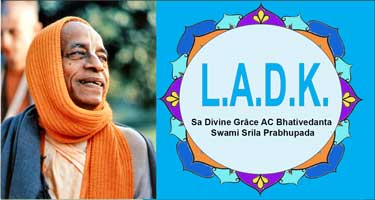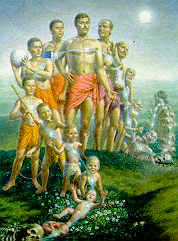At the moment of death, the soul takes on a new body naturally, just as it passed from childhood to youth and then to old age in the previous body. This change does not disturb one who is aware of his spiritual nature.
Bhagavad-gita: II verse 13.
Throughout our lives, we have transitioned from being a baby to a teenager and then to an adult, and eventually, we will become elderly. We all have experienced this transformation from a baby’s body to that of a teenager and finally to that of an adult. Although those bodies no longer exist, we still do, don’t we? This means that despite the various bodies we take on in this life, we remain the same person. Therefore, we are different from these bodies. When this body is no longer suitable, we will acquire another one. Change is a natural law.
We say “this is my finger, this is my leg, this is my head, this is my right hand.” But who is the owner of these different parts of the body? The answer is the individual residing within the body. The self is thus the possessor and observer of the body.
It is also essential to understand that at the time of death, it is not the individual who dies but their body. Vedic wisdom reveals that the body is always dead. For example, consider a microphone made primarily of metal. When electricity passes through this device, it converts sound into electrical impulses which are amplified and transmitted via speakers. If there is no electricity, nothing happens. Whether the microphone functions or not, it remains nothing more than a collection of metal, plastic, etc. Similarly, the human body operates because it is powered by vital energy located inside. When this vital energy leaves the body, it is said to be dead; however, in reality, the body is always dead. It is only a combination of earth, ether, water, fire, and air. After death, all these elements return to the earth. Thus, it is vital energy that is significant; its presence alone gives the appearance of life to the body. Whether alive or dead, the physical body is nothing but a mass of lifeless matter.
An active principle animates the body; without this principle, the body is no longer animated. Herein lies the real question: “What is this active principle?” This question is central to the philosophy of Vedanta. In fact, the Vedanta-sutra begins with the maxim “athato brahma jijnasa” – what is the nature of the self within the body?
One studying Vedic philosophy first learns to distinguish between a living body and a corpse. If they cannot comprehend this principle, we ask them to consider the problem logically. Everyone can see that the body changes and moves due to the presence of the active principle, the soul. In the absence of this active principle, the body is unable to change or move. There must therefore be something within the body that animates it. This concept is easy to grasp. The body is always dead. It is like a complicated machine. A tape recorder consists of inert matter, but once you, the living being, turn it on, the apparatus works.
Likewise, the body is also inert matter, but within it resides the vital force. As long as this activating principle remains in the body, the latter functions and appears to be alive. For instance, we all have the ability to speak. If I were to ask you to come, you would; but if the activating principle left your body, even if I called out to you for thousands of years, you would not come. This is a straightforward concept to understand...
But what exactly is this activating principle? You are yourself this activating principle. The living body and the corpse are distinct things. Only the presence of this activating principle distinguishes them. When it is absent, the body is declared dead. The true self is identical to the activating principle. In the Vedas, we find the maxim “so ‘ham”: “I am the activating principle.” Additionally, it is stated that “aham brahmasmi”: “I am not this material body. I am spirit, or I am the soul.” This constitutes spiritual awareness of the self.
The soul, the activating principle, migrates from one body to another upon death. While the body may appear differently, the self remains the same. We can observe this transition from one body to another even during our own lifetime. Indeed, we have progressed from an infant's body to a child's body, from a child's body to an adolescent's body, and ultimately from an adolescent's body to an adult's body. Nonetheless, the conscious entity—the soul—remains ever the same. The body is material, while the genuine self is spiritual. Those who comprehend such matters are considered to have realized their spiritual selves.
A spiritually advanced individual naturally becomes aware of this distinct principle since they never regard themselves as their material body. Instead, they contemplate, “I am a spiritual soul.” This represents the initial instruction imparted to Arjuna in the Bhagavad-gita: “O Arjuna, you place too much significance on the bodily condition, whereas individuals endowed with knowledge pay little heed to the material body, whether it is dead or alive.” Henceforth, this marks the initial awakening along the path of spiritual advancement. Every human being in this world places great importance on their body, caring for it in countless ways when it is alive and often constructing grand statues and impressive funeral monuments after its passing. Such behavior exemplifies bodily consciousness, yet nobody understands this activating principle responsible for bestowing beauty and life upon the body. At death, nobody knows the destination of the genuine self, the activating principle that continues to live beyond the grave. It is said that the soul is eternal, and consequently, the actual person inhabiting the body never truly perishes. This offers solace and profound truth.


